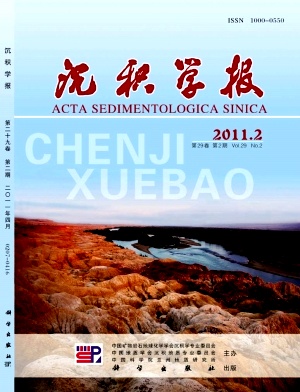New Prediction Technology of the Secondary Porosity Zone and Its Application in the Western Part of Daqing Peripheral
- Received Date: 1900-01-01
- Rev Recd Date: 1900-01-01
- Publish Date: 2011-04-10
-
Key words:
- secondary porosity /
- organic acid /
- carbonate /
- compaction /
- prediction of reservoir
Abstract: The genetic mechanism of secondary porosity is complex, there are a lot of factors that control the development of secondary porosity. Looking at the various theories, regardless of the theory of formation water, geothermal field, precipitation, or the theory of organic matter evolution. From the mechanism point of view, dissolution of sandstone and formation of secondary porosity can be attributed to the organic acid and inorganic acid. The burial effect of clastic rocks on reservoir properties has twoway effect, one is the negative effect, that is the deterioration of reservoir properties, mainly are mechanical compaction and diagenetic cementation; the other is a positive effect, that is making reservoir properties better, mainly are
the dissolution of acid fluid such as leaching of meteoric water, carbonate and bicarbonate, organic acids and so on.
Combining with the oil geological features of the western part of Daqing Placanticline, the controlling factors of secondary porosity are analysesed in this paper. The author believe that secondary porosity in the study area is mainly controled by mechanical compaction, diagenetic cementation, meteoric water filtering effects and dissolution of acid fluid such as organic acids. The three controlling factors such as compaction, organic acids and carbonate, confirmed their threshold value of controling development of secondary porosity and the corresponding quantitative assessment model were set up.
Porosity is greatly influenced by depth, Athy (1930) and Hedberg (1936) believed that porosity and depth are an exponential relationship under the normal effect of compaction.This paper established normal compaction curve formulas for three lithologies such as coarse sandstone, fine sandstone and siltstone in the study area, the formulas are (z)=44exp(-0.000 65·z),(z)=47.8exp(-0.000 68·z), (z)=48exp(-0.000 7·z), where Z represents the depth, (z) represents the porosity at present.
During the process of thermal evolution and degradation of organics, organic acid and CO2 are generated. They could form organic acid thermal fluid in water, which could corrode aluminosilicate mineral and carbonate cement in reservoir and thus form the secondary porosity(Surdam,1989). According to the crossplot analysis of the abnormal high porosity data and organic acid content in the formation water and the crossplot analysis of the abnormal high porosity data and the value of HCO3+ CO23 in the research area, data shows that they have a good correlation, and the four abnormal high porosity areas on vertical(500~850 m, 1 050~1 350 m, 1 500~2 050 m, 2 125~2 350 m;) correspond to high value areas of acid organic and HCO-3+ CO23 respectively.
Then how to give a plane quantitative prediction to the secondary porosity? It has been proved that when the value of organic acid is higher than 1 000 mg/l or the value of HCO-3+ CO23 is higher than 3 000 mg/l the secondary porosity is extremely developed. Then what is the threshold of the porosity? The threshold is a normal compaction curve formula and it varies with depth. The developed area of the secondary porosity can be drawn on plane by using the value higher than the thresholds. In order to predict the plane characteristics of the secondary porosity better, reservoir group can also be divided. The area where the value is higher than zero is the relative developed area of the secondary porosity, and the area where the value is lower than zero is the relative area of diagenesis cementation and zero area is the normal compaction area or cancellation area. The higher the value is, the more developed the secondary porosity is.
Sedimentary facies is a congenital factor that controls the original physical properties of the reservoir, while diagenetic facies, as an acquired factor, is the consequence of late reformation. Consequently, study of sedimentary facies and diagenetic facies should not be neglected when the secondary porosity is researched. Based on the predicted isoline map of abnormal high porosity, organic acid value and the concentration of HCO-3+ CO23, combined with the sedimentary facies and the diagenetic facies, secondary porosity can be predicted.In order to check applicability of this method, the predicted results and the reserve areas are superimposed in this paper. The reserve areas in each formation coincide well with the results predicted in the paper. Thin section analysis also gives convincing evidence that there is a lot of secondary porosity in this area. Therefore, this method is convincible to predict the secondary porosity. It also provides a direct indication method for exploration deployment and the submission of reserves.
| Citation: | LIU Shaojun. New Prediction Technology of the Secondary Porosity Zone and Its Application in the Western Part of Daqing Peripheral[J]. Acta Sedimentologica Sinica, 2011, 29(2): 207-216. |






 DownLoad:
DownLoad: